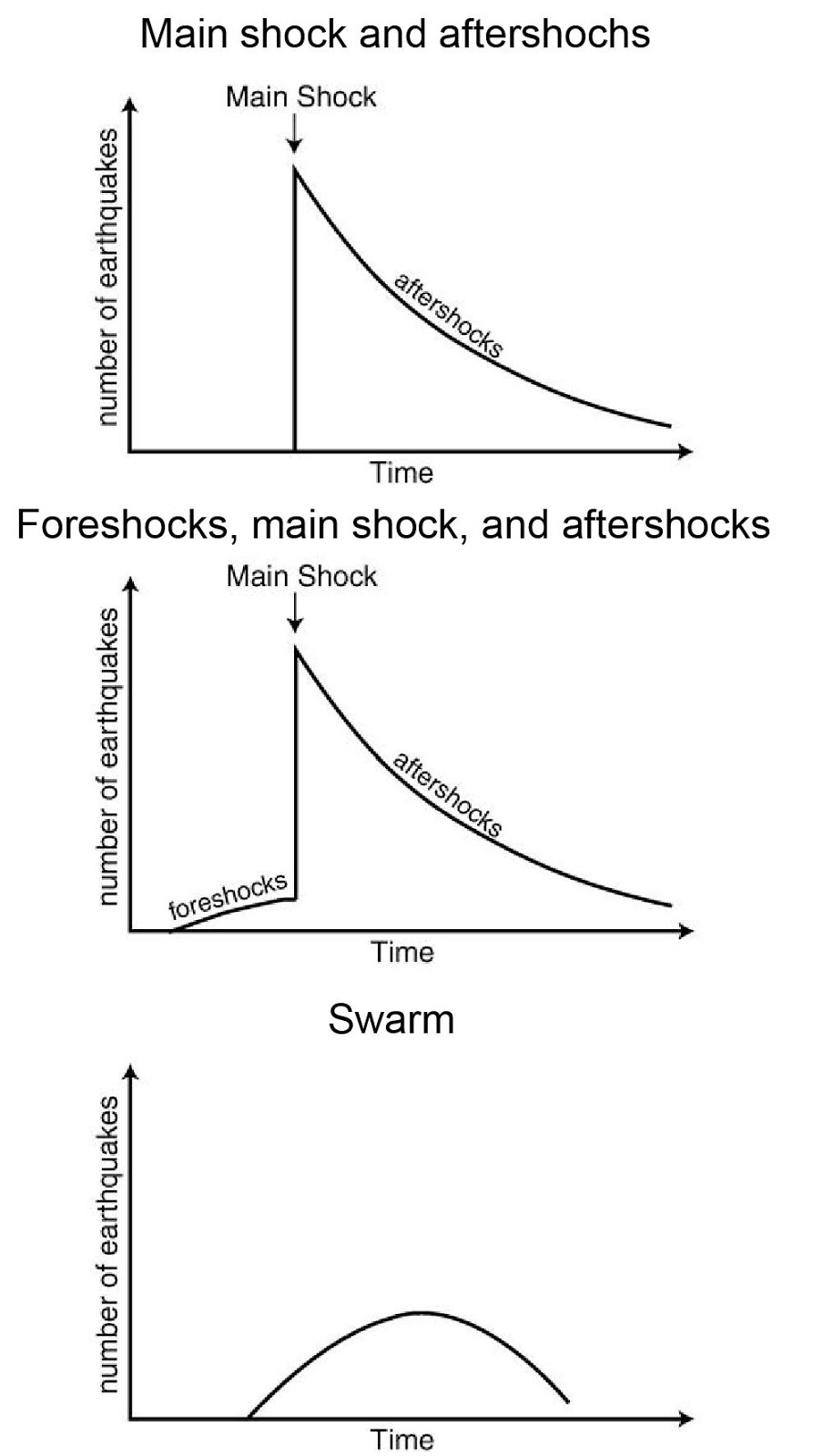-
Q. Explain the term earthquake swarms and how they are different from aftershocks and foreshocks.
12 Mar, 2021 GS Paper 1 GeographyApproach
- Start the answer by briefly defining the term earthquake swarms
- Discuss what you mean by aftershocks & foreshocks.
- Discuss the characteristics of the earthquake swarms and compare them with aftershocks & foreshocks.
- Conclude Suitably.
Introduction
An Earthquake swarm is a sequence of mostly small earthquakes with no identifiable mainshock. Swarms can last weeks and produce many thousands of earthquakes within a relatively small volume.
Body
Aftershocks & Foreshocks
- Foreshocks are earthquakes that precede larger earthquakes in the same location. An earthquake cannot be identified as a foreshock until after a larger earthquake in the same area occurs.
- Aftershocks are a sequence of earthquakes that happen after a larger mainshock on a fault.
- When an earthquake occurs, the state of stress around the earthquake dramatically changes. The Earth wants to get back to some type of equilibrium, and that is the process that produces aftershocks.
- Aftershocks become less frequent with time, although they can continue for days, weeks, months, or even years for a very large mainshock.
Characteristics of the Earthquake Swarms
- Earthquake swarm’ is a series of low magnitude earthquakes that occur in a localized region and over a period of time ranging for days, weeks to even months.
- When seismic energy piles up inside the Earth and is released in small amounts from certain points, such a series of earthquakes can occur.
- The earthquake swarms occur at rates and with magnitudes that don’t obey any of the “rules” that aftershock sequences follow.
- Sometimes, these rumblings of the Earth are also accompanied by acoustic or sound emissions.
- At volcanoes that are active and getting ready to erupt, swarms can be a sign of magma moving in the subsurface. However, not all swarms are associated with fluids and volcanoes, tectonic forces can also trigger swarms.
- For example, in India, a Geological Survey of India (GSI) report held that the Deccan Plateau region experiences earthquake swarms, owing to tectonic activity.
- They can come as foreshocks to the main earthquake which could be much greater in magnitude.
Conclusion
Seismic activities can be classified into either a major quake followed by aftershocks or an earthquake swarm. Therefore, both reflect the pent-up seismic activity inside the earth’s crust.
To get PDF version, Please click on "Print PDF" button.
Print PDF





